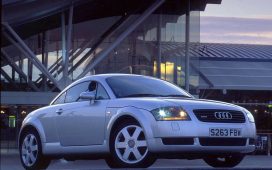Today we are witnessing one of the most vibrant transformations in the automotive industry. As the years passed, the meaning of the word transportation has become broader and soon the future of automotive technology is set to take us to a future that may revolutionise the way we transport ourselves. Who would have thought that electric vehicles, let alone autonomous driving cars, are flickering off the silver screen straight to our roads? As we open a discussion on what is possible in the automotive industry, it is important to look at how these revolutionary trends in automobiles will affect automobiles and the transportation system at large.
1. The Rise of Electric Vehicles (EVs)
One of the most promising automotive industry novelties is the constant evolution of electric vehicles known as EVs. Owing to the escalating pressures of environmental conservation and the push for auto durable solutions, EVs are slowly becoming the order of the day. Internal combustion engines, which have been dominant in the car industry and our roads are still being replaced by electric cars, trucks, and buses among others.
There is more to EVs than simply being the green car of the future; it is a technology evolution in the automotive industry power sources. Although electric drivetrains are efficient in energy usage, zero-emission and exemplary power trounce their rivals in the area of acceleration and distance per charge. In addition, as battery development progresses forward, electric cars are anticipated to reach the level suitable for mass production and application.
It is Important to note that the social electric vehicle revolution is not just for personal cars only. With the emergence of electric buses, trucks, even airplanes the entire transport sector has undergone a great change for EVs has a huge impact in decreasing the overall carbon emissions and paving way for a pollution free future.
2. Autonomous Vehicles: The Next Frontier
In automobile innovation another area of special interest is in taking the wheel away from man and making vehicles autonomous, often referred to as AVs. Self driving capability technology is one of if not the most disruptive technology in the automobile industry and potentially the face of transport as is known today. Intelligent auto-mobiles with efficient sensors, Artificial Intelligence and Machine learning can drive the automobile to improve the safety and reliability of the automobile travelling without interference of the human operator.
Self-driving cars will revolutionise the means of transport because one of the main causes of car theft is human factors. Smart transport systems allow the opening of the communication between other AVs and part of the infrastructure to make them coordinated in flow, thereby regulating traffic concentration and therefore ensuring that roads are safe.
Besides cars for private use, automation is already an appropriate advancement for buses and ridesharing services, in logistics and providing services and products. This is set to bring about a drastic change in mobility because in urban centres, AVs if used as ride sourcing for first and last mile could easily render the use of personal cars causing traffic congestion.
3. Smart Transportation Solutions
Saying that innovation is only in automobiles is misleading, for it is very easy to see what is coming in the adjacent industries. It is clear that every segment of the transport domain is shifting towards the interconnected and smart arrangement. Recent innovative methods and structures focused on IoT technology set the new tendencies of developing smart transport solutions to modify the current future of transport activity.
Some of the examples include automated axillary technologies such as smart traffic management systems which, depending on data collected through sensors in the roadway of connected automobiles help in controlling traffic flow in real-time and as a result reducing fuel wastage due to congestion. That is why smart infrastructure has now been introduced, for instance traffic signals that may change with traffic and parking systems that may direct drivers to places where more bus spaces are provided faster .
However, smart transportation is not confined only to public transport, maybe even though many people use their own cars. Others include remote diagnosis of automobiles, prognosis of automobile’s failure and over the air improvement of software for friendlier interfaces and more efficient automobiles. This means the potential to enhance ‘self-organisation,’ such that the car can schedule its own service or the parts required can be ordered on its own in the future will be slight.
4. Sustainable Automotive Solutions
Of all the problems of the present world like climate change and company sustainability or operational sustainability, the automotive industry has given more value to sustainable solutions. The other key issue for car makers is not electric vehicles alone; the other is getting power from fossil sources, for instance, hydrogen fuel cells. Transportation vehicles that use hydrogen as their power source emit only water vapor and thus, a hydrogen powered car can in fact provide a plausible substitute to the conventional on-board internal combustion engines.
Other than the fuel types, which the manufacturers have had in mind for a long time, they are also preoccupied with how to minimise the automobile production effects. In addition to that, there are utilisation of composite materials such as carbon fibre and aluminium with the aim of achieving light vehicle weight resulting in higher efficiency and better performance. Moreover, recycling and reusing are gradually becoming interwoven into the automotive production process, which, in turn, works on the construction of the circular economy system within the automotive market.
Embedded within the concept of sustainability for automotive innovations, there is the creation of automobiles that are designed to be utilised for an extended amount of time and the ability to easily break down automobiles once their useful lifespan is near their end. On this matter, it is conceived that recycling of the material can be made possible so as to reduce the effects the vehicles pose to the environment at the time they are produced and at the time they are disposed of.
5. Cutting-Edge Automotive Tech: From AI to 5G Connectivity
Another one of the leading causes regarding auto change is that many of today’s automotive technologies are embedded in automobiles. Machine learning, Artificial intelligence and even the integration of 5G on connected cars have been incorporated into the vehicles to increase safer and improved performance with comfort of the passengers.
AI finds its place in any segment starting from ADAS all the way to level 5 AVs. Cars can improve the driving mode, safety, and fun, through selecting drive AI-outcomes like the lane assist, help in delicate emergent braking and adjustment of the cruise of the car. In the future, the capacity of increasing the Artificial intelligence in the enhancement of the self-steering of the cars will be much more fitted to enable the cars to prompt on the future circumstances on the roads.
Another area that connectivity through the 5G network will cause radical change is on smart transportation. That’s because, due to H2, there will be constant high data transfer rates with virtually no delay time, 5G networks will support V2X to let vehicles communicate with other vehicles and with the infrastructure in real-time. This will finally lead to; less risks on the roads, appropriate flow of traffic, even the self autos may be told to return to the garage if something is negative.
6. The Future of Mobility: More Than Just Cars
This feature is not simply about owning a car, though this has been the focus of so much attention to date. Ride-hailing, car sharing and micro-mobility solutions like e-scooters, bikes are changing the way people are getting mobility in urban environments.
Smart cities and ever expanding connectivity is slowly merging the transport ecosystem thus enhancing the smart city model. The exposure of consumers to a variety of mobility assets means that automobiles will no longer be confined to individual car ownership but instead consumers will have one or more mobility means at their disposal of which a personal car will be one of them ; and importantly all these means will be integrated into one digitally integrated system.
The MaaS model is already in trials in several cities across the globe, where users can organise and pay for all the means of transport via a single mobile application. In the future, this model can incorporate other forms of transportation such as self-driving cars, transport buses, taxis and even aerotaxi so that consumers will have a variety of transport systems that benefit their wishes in a given society.
7. The Road Ahead: Challenges and Opportunities
As much as new ideas continue to be large in the automotive industry, new aspiring innovations are not without challenges. Issues like; how it will transform from an organisation triggering and constrained by regulations; how it will deal with matters of physical infrastructures; and how society will accept those innovations has to be provided for before the full potential of such innovations can be realised.
For instance, self-driving cars deployment will lead to legal changes in areas such as safety and responsibility, compensation as well as insurance. Besides, a lot of objects that would make it possible to use electric cars, for instance, the places for the cars’ recharging, require further development and improvements for the availability for car owners.
However, there is a very great potential in automotives that people ought to embrace. Consequently, the trend rises to greater technological creations that are useful for enhancing the transport networks’ efficiency, security and constructivism around the globe.
Conclusion
The automotive industry is currently predisposed to an era of tremendous change. In this paper, revolutionary automobile trends that are already defining the direction of the future of transport are presented. CO From electric cars and self-driving vehicles to intelligent transport systems, the automotive market has never been more innovative.
Digital disruption, environmentally friendly solutions, and innovative IoT enabled, smart automobiles and transport systems are the real and promising scenarios for the automotive industry. But it still looks at certain obstacles in stimulating the regulatory changes and guaranteeing the development of infrastructure to back up these enhancements. Looking into the future, it can be stated that the automotive business’s pursuit of a smarter, environmentally friendly, and efficient future will facilitate the advancement of the way to live, work, and travel.










